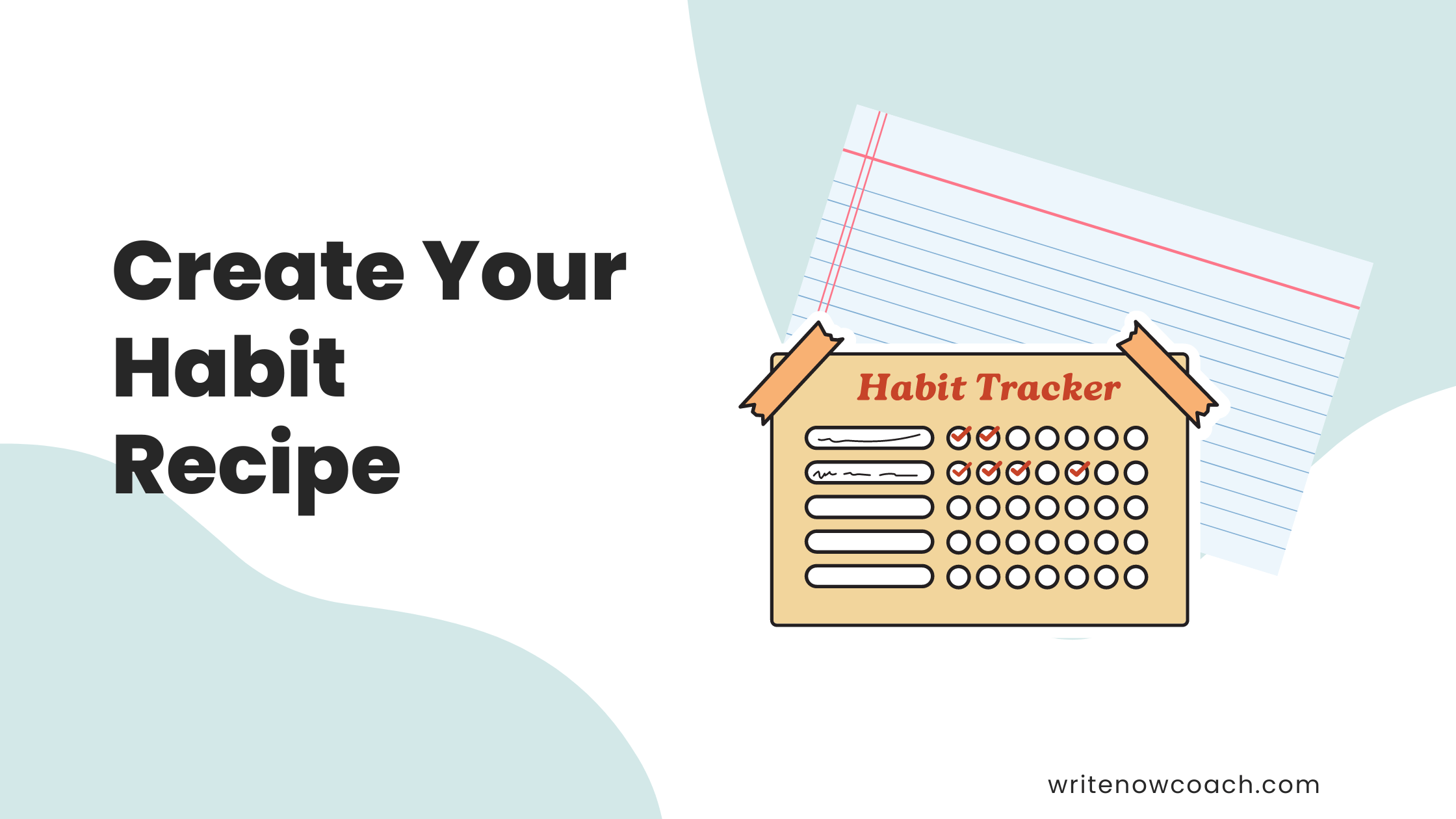Create Your Habit Recipe
by Rochelle Melander
Where and when do you write?
Octavia Butler write early in the morning, long before the birds began chirping, so she could fit in a full day of writing before her day job. Roald Dahl wrote in a hut in his back yard. L. Frank Baum wrote many of the Oz books at the Hotel del Coronado between 1904 and 1910. Maya Angelou rented a hotel room as well, where she’d go early every morning to write. (She also liked to sip a glass of sherry while she wrote.)
Now it’s time to ensure you’re dedicating the time and space to writing.
In the book Tiny Habits by B.J. Fogg, the author recommends a process to help readers establish a new habit. It involves anchoring your new habit to an established habit—like adding flossing to your established habit of daily brushing. Here’s how:
Step 1: Figure out where, when, and how often you want to write.
School kids have it easy: someone decides when and where they’re going to learn. As writers who may have day jobs, we’ve got to schedule our writing around everything else in our lives. Jot down the following:
- Where: Are you an at-home writer or do you prefer the library?
- When: What’s your general time frame—morning, afternoon, Saturday?
- How often: Are you planning to write daily? Weekly?
Step 2: Find an anchor in your life.
Fogg encourages readers to choose a habit to anchor your practice to. This anchor should match the location, frequency, and purpose of the habit you want to acquire. You’ve already decided where, when, and how often you’ll write. Now find an established habit that fits in that window that you can anchor your writing to.
If you’re having trouble, look at the window of time you want to write in—your when, where, and how often—and list all of your daily habits.
For example, if you want to write at home in the afternoon three days a week, you might choose an anchor like:
- After I put the lunch dishes in the dishwasher
- After I rinse out my tea mug
- After I walk the dog
Step 3: Choose a celebration
According to Fogg’s research, emotions create habits. If we want to wire our new habits into our brain, we must follow our practice with a positive emotion. We can do this by celebrating our win. It can be as simple as:
- Say yes! or yay!
- Say “I did it!”
- Do a fist pump
- Dance
- Give yourself a thumbs-up
Step 4: Create your habit recipe
Your habit recipe looks like this:
After I (ANCHOR), I will (WRITE). To wire the habit in my brain, I will (CELEBRATE)
Now you have your anchor, your habit, and your celebration: it’s time to put this into practice.
Start now. Don’t wait until fall. It’s tempting to say, Oh, I’ll do that in September. Or, when the kids start back at school. Or, when things calm down. But they never calm down. If you’d like to start the habit, at least start practicing now. Maybe you want to write 3 days a week in September. Start with writing once or twice a week now. Do it at the same time.
Get accountability. Find a friend and create your habit recipes together. Then check in once a week.
What if you need more help?
If you are still wondering WHY you should keep writing and what to write about and how to make it marketable, come to my Write Your Book, Boost Your Business Class on September 4. You’ll learn:
+Creative ways to use your book to boost your business.
+How a book can help you earn money and connect with influential people.
+What you need to include in your book to make it competitive in this market.









